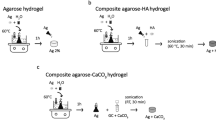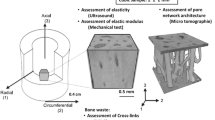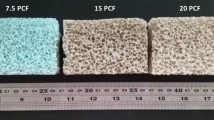Abstract
THE problem of possible noxious effects of ultrasonic energy on calcified tissues is important because of its wide use in clinical and dental practice. The conditions of transmitting the ultrasound to bones and teeth and their surroundings are more complex than in soft tissues, being in a certain sense similar to those resulting from absorption of roentgen radiations in bones, causing, for example, selective overheating of bones due to increased absorption of ultrasonic energy and various interface effects on their surface. Coarsening of trabecular bone pattern, periosteal new-bone formation, circumscribed foci of bone sclerosis, localized bone necrosis, pseudocystic and cystic appearances and bone fractures were observed in various experiments on animals1,2. Not only were damaging effects on bone noted, but also on the dental germs after 3–4 W/cm2 ultrasonic energy9. The traumatic capacity of ultrasound in dentistry became the object of intense investigations from the middle 1960's because of the still wider use of ultrasonic dental cutting instruments in practice. Enamel defects and dyscrasias, loss of tooth structures, pink or yellow discolorations, mobile and fractured teeth and missing teeth were often correlated with the intensity and exposure time3,8. Thus, it can be concluded that there exists a real danger in application of ultrasound of too high an intensity and of prolonged exposure time.
This is a preview of subscription content, access via your institution
Access options
Subscribe to this journal
Receive 51 print issues and online access
$199.00 per year
only $3.90 per issue
Buy this article
- Purchase on Springer Link
- Instant access to full article PDF
Prices may be subject to local taxes which are calculated during checkout
Similar content being viewed by others
References
Janes, J. M., Herrick, J. F., Kelly, P. J., and Paterson, L. F., Proc. Mayo Clin., 35, 663 (1960).
Janes, J. M., Herrick, J. F., Kelly, P. J., and Paterson, L. F., J. Bone Joint Surg., 44, A, 1299 (1962).
Knapp, M. J., and Bernier, J. L., J. Amer. Dent. Assoc., 58, 50 (1959).
Kolář, J., and Babický, A., Strahlentherapie, 109, 483 (1959).
Kolář, J., and Babický, A., Nature, 192, 1297 (1961).
Kolář, J., and Babický, A., Nature, 195, 1107 (1962).
Kolář, J., Babický, A., and Vrabec, R., The Physical Injurious Agents and Bone (Pub. House, Czech. Acad. Sci., Prague) (in the press).
Nielsen, A. G., and Kennedy, J. J., J. Amer. Dent. Assoc., 56, 203 (1958).
Schöniger, R., Stoma, 6, 52 (1913).
Author information
Authors and Affiliations
Rights and permissions
About this article
Cite this article
KOLÁŘ, J., BABICKÝ, A., KÁCLOVÁ, J. et al. Influence of Ultrasound on Bone Mineral Metabolism. Nature 202, 411–412 (1964). https://doi.org/10.1038/202411a0
Issue Date:
DOI: https://doi.org/10.1038/202411a0
This article is cited by
Comments
By submitting a comment you agree to abide by our Terms and Community Guidelines. If you find something abusive or that does not comply with our terms or guidelines please flag it as inappropriate.



